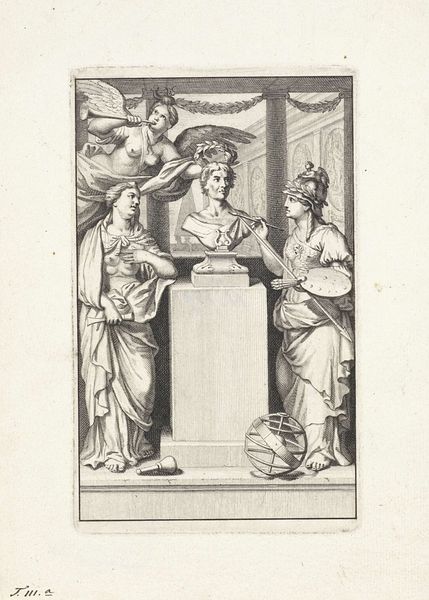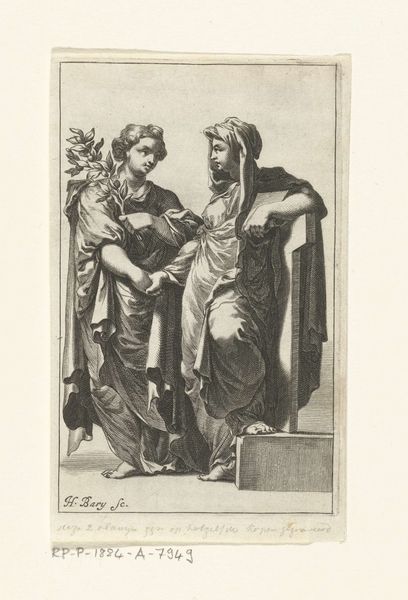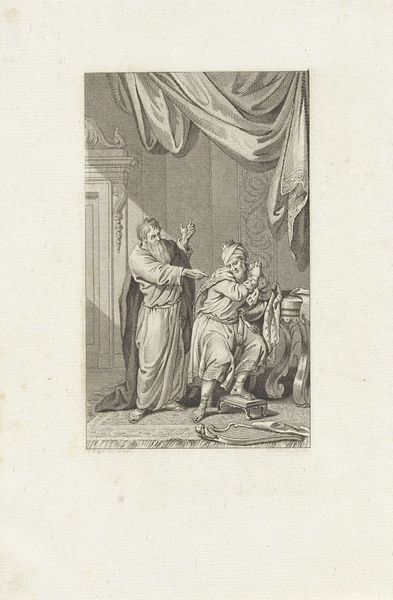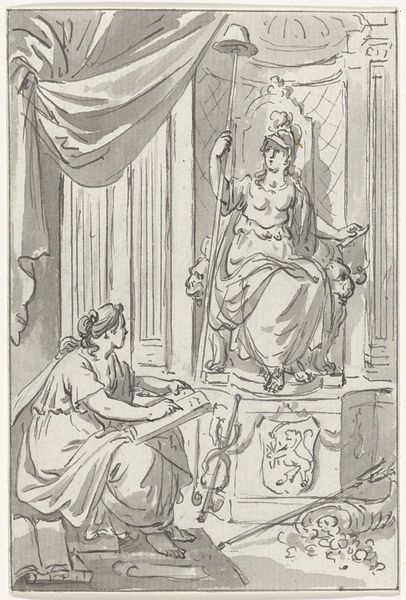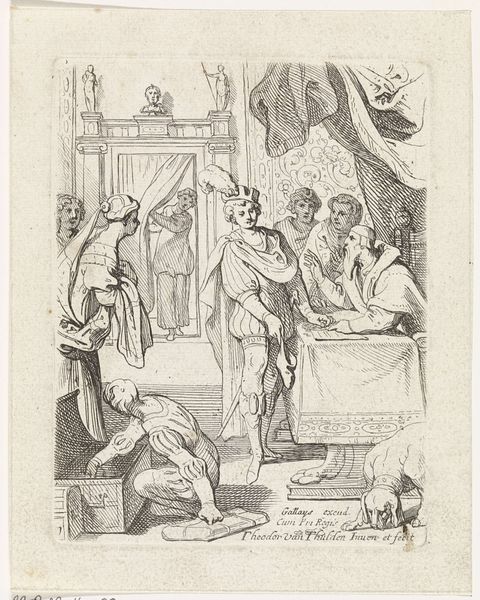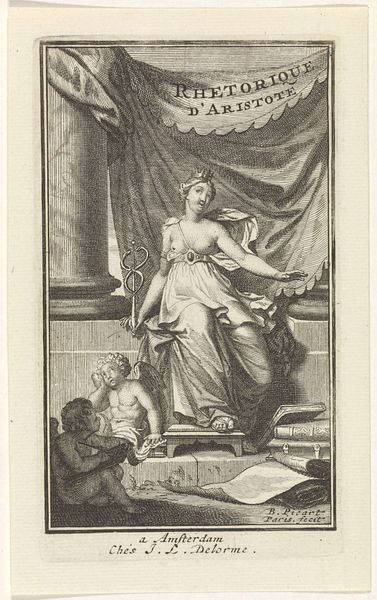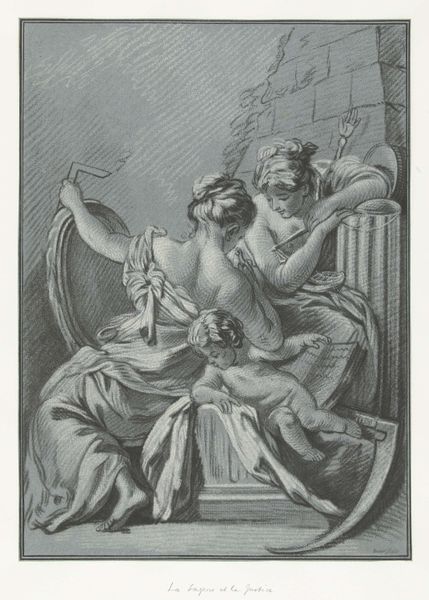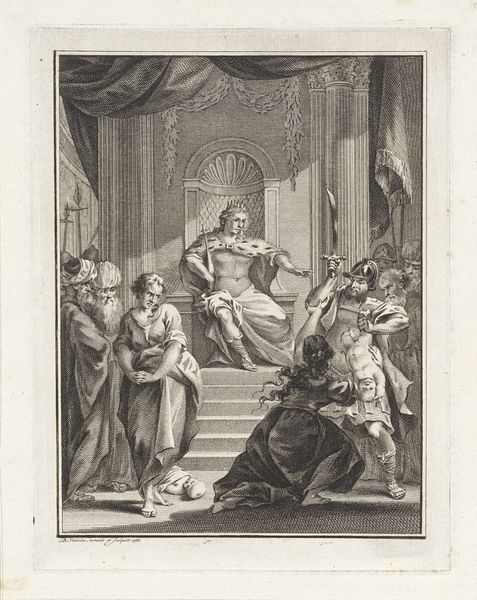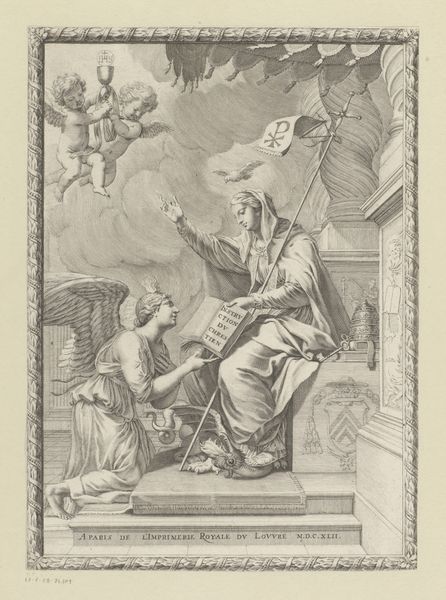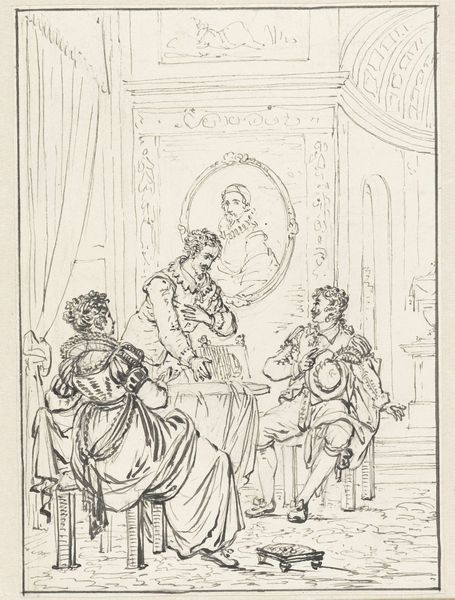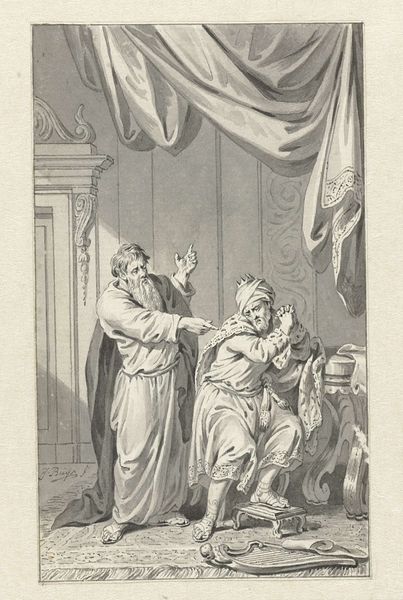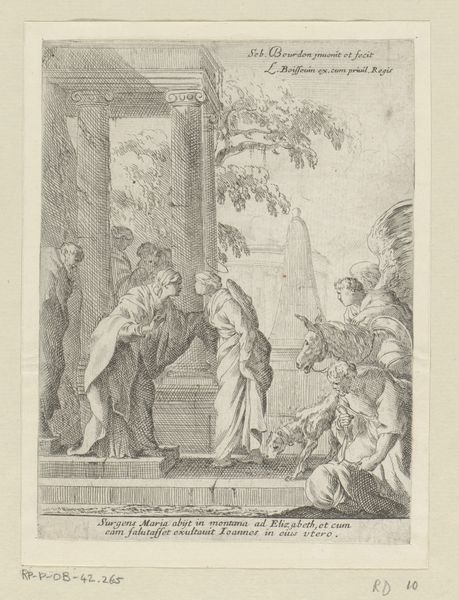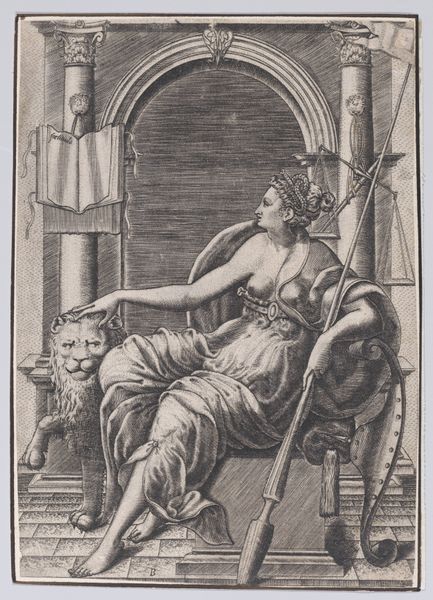
print, engraving
#
neoclacissism
#
allegory
# print
#
figuration
#
line
#
genre-painting
#
history-painting
#
engraving
Dimensions: height 162 mm, width 105 mm
Copyright: Rijks Museum: Open Domain
Editor: This engraving, "Geschiedenis en de Hollandse Maagd," made in 1786 by Reinier Vinkeles, depicts a seated allegorical figure and a woman writing in a book. It feels very formal and staged, and makes me wonder about the moment in history that it reflects. What can you tell me about the meaning of this print? Curator: This print, "History and the Dutch Maiden," participates in a crucial dialogue about Dutch national identity in the late 18th century. How do you think the social and political climate of the time might be shaping how these images are created and interpreted? Editor: I’m not sure, tell me more… Curator: Well, consider the political context: This was a period of growing tension between the Patriot movement and the established Stadholderian regime. The Hollandse Maagd, or Dutch Maiden, became a symbol for the Patriot cause, representing liberty and republican ideals. The engraving, made as a print, allowed the imagery to circulate widely. Do you think the figures are portrayed in an empowering way? Editor: I see that she is seated on what looks like a throne, so she does seem pretty important. What’s the story with the figure writing next to her? Curator: The other figure is “History” who carefully documents the values and virtues the Dutch Maiden represents. These prints served as visual arguments, influencing public opinion and shaping the collective memory of this period. This reflects the active use of visual media in shaping political discourse and social identity during the late 18th century. What do you make of the choice to portray these allegorical figures, rather than something more realistic? Editor: That’s so interesting – so it was a piece of propaganda, essentially! It shows that even in art, there’s always a political context that influences the work itself, and its reception. I definitely learned something new today. Curator: And I think understanding the print market and the power of reproducible imagery during this period, also provides us insight on the democratisation of the art and of the values it tries to represent.
Comments
No comments
Be the first to comment and join the conversation on the ultimate creative platform.
